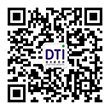Paper halogen detection standard IEC61249-2-21 test process
Date:2025-07-07 10:12:47 Classification
:【question】 Visits:
According to the IEC61249-2-21 standard, the halogen detection process is mainly for PCB materials in the electronics industry, but its core methods and limit requirements can be used for paper detection. The following is a test process and key points that combine standard requirements and industry practices:
I. Test standards and limit requirements
1. Standard basis
- IEC61249-2-21:2003 stipulates that bromine (Br) in PCB substrates is ≤900ppm, chlorine (Cl) is ≤900ppm, and total halogen (Cl+Br) is ≤1500ppm.
- Paper detection needs to be combined with customer or regulatory requirements (such as EU RoHS, REACH, etc.). If there are no special requirements, the above limits can be used as a reference.
2. Scope of application
- This standard is mainly for electronic materials, but the detection methods (such as oxygen bomb combustion method) can be extended to halogen-containing polymer materials such as paper.
II. Test process steps
1. Sample preparation
- Sampling: Randomly select representative paper samples according to standard requirements to ensure that the samples are clean and pollution-free.
- Pretreatment: Cut or grind to uniform particles (e.g. less than 2mm) to remove surface contaminants.
2. Selection of detection method
- Oxygen bomb combustion method (EN14582):
By burning the sample, halogens are converted into soluble ions (e.g. Cl⁻, Br⁻), and then the content is determined by ion chromatography or titration.
- X-ray fluorescence spectrometry (XRF):
Suitable for rapid screening, but it should be noted that when the halogen content in the paper is low, pretreatment (e.g. ashing) may be required to improve the detection accuracy.
3. Data analysis and judgment
- Result calculation: According to the concentration of Cl⁻ and Br⁻ in the solution after combustion, it is converted into the halogen content in the sample (unit: ppm).
- Judgment standard: If Br and Cl are both ≤900ppm and the total halogen is ≤1500ppm, it meets the halogen-free requirements.
4. Report issuance
- Includes test methods, instrument models, environmental conditions, results and conclusions, and must be stamped with CMA/CNAS certification to ensure authority.
III. Notes
1. Applicability adjustment
- Paper may contain natural halogens (such as Cl⁻ in seawater), and background values must be deducted through blank experiments.
- If the customer requires a stricter limit (such as total halogen ≤1000ppm), it must be noted separately.
2. Regulations and customer requirements
- EU (EU) 2019/2021 prohibits the use of halogenated flame retardants in displays, and paper needs extra attention if it is used for electronic packaging.
- Customers may specify specific methods (such as IPC-TM-650 2.3.28.2), which must be confirmed in advance.
IV. Recommended testing agencies
- Third-party laboratories: such as Dezewei Testing, which have CNAS/CMA qualifications and can provide testing services for standards such as EN14582, IPC/JEDEC J-STD-709, etc.
If you need a more detailed process or customized solution, it is recommended to contact a professional organization for technical support.




 Shen Gongwang Security: 44030602006947
Shen Gongwang Security: 44030602006947